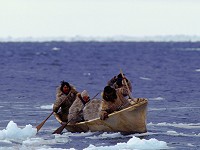| Origin & Development | |
|
Legends & Fairy tales • Earth's Crust Thickness • Underwater Relief • Landscapes • History & Formation • Seismic Activity • | |
| History of Lake Baikal | |
|
History of Explorations • Inhabitants & Settlers • First maps of Baikal • Archaeological Sites • | |
| Lake Baikal Climate | |
|
Introduction • Fogs • Winds & Waves • Ice Conditions • | |
| Fauna & Vegetation | |
|
Mammals • Baikal seal - Nerpa • Ichthyofauna • Invertebrates • Vegetation • | |
| Water of Lake Baikal | |
|
Colour • Transparency • Temperature • Pressure • Depth • Currents • Budget • Chemical Composition • Pollution • | |
| Recreational Areas | |
|
Circumbaikal Railway • Peschanaya Bays • Olkhon Island • Chivirkuysky Gulf • Wooden Irkutsk • Trans-Siberian Railway • | |
| People of Lake Baikal | |
|
People of Siberia • Buryat nation in Baikal • Russians in Baikal • | |
|
| |
History of Lake Baikal Explorations
There were a number of detailed and reliable geographic data on Baikal in the papers of Russian envoys starting out for China. To prove the reliability of the facts about Baikal's nature and population, the Petersburg Academy sponsored and sent to Siberia several expeditions. Thus, the first scientific expedition to Siberia was carried out as the private errand of Peter I in 1723-24. It was headed by Messerschmidt D. G. and brought back some new materials about Baikal.
Poles I. D. Dubovsky, A. L. Chekanovsky and I. D. Chersky, V. A. Godlevsky exiled to Siberia for having participated in a rebellion in 1863, also contributed greatly to the exploration of Baikal. At the end of the XIX century in connection with the construction of the Trans-Siberian RW, geological and geographical explorations took on a more systematic character. At that time academician V. A. Obruchev, a famous Russian geologist and geographer, began his scientific investigation. In the 1920-s the Academy of Sciences organized an all round exploration of the lake. In 1976 the first colour picture of Baikal was taken from space. Having been explored for three centuries, Baikal still keeps many mysteries. The unique surroundings of the lake require from explorers persistence and time. Lots of the lake phenomena have not been described yet. They are completely hidden from science, and scientists endeavour to penetrate deeper into the mysterious world of the lake. But in the future, the amazing nature of Baikal is sure to reveal to the scientists new, as yet unknown phenomena. Explorers of Lake Baikal: I. G. Gmelin S. P. Krasheninnikov P. S. Pallas P. A. Kropotkin I. D. Chersky V. A. Godlevsky B. I. Dybovsky A. L. Chekanovsky L. S. Berg V. A. Obruchev G. Y. Vereshyagin M. M. Kozhov ... Explorations continue ... | |||||
